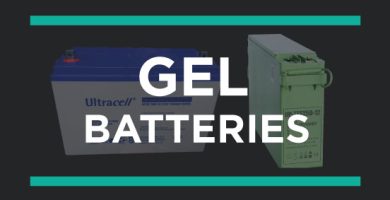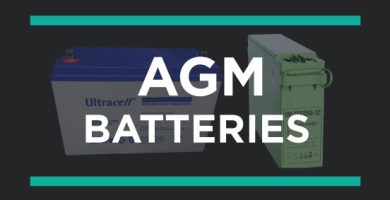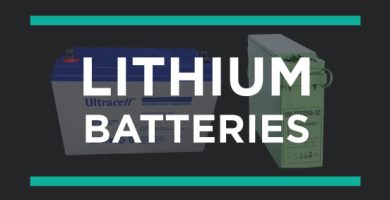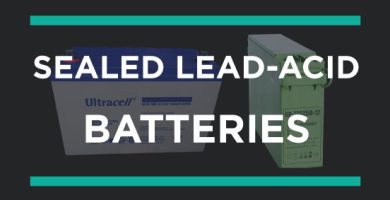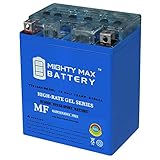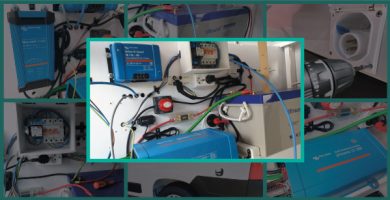Putting an auxiliary battery in your camper van will mark a before and after… It is an important element of the electrical installation that will significantly improve your travel experiences. So, although in the process, from buying it to installing it, many doubts may arise that you must solve: what type of battery is best for you, what capacity you need, how to install it, what other components are needed for its installation, how to extend its life… read on and you will get answers to many of these questions that may be on your mind!
Comparative table of the different types of solar batteries for camper vans
| Our favorite | Most popular | ||||
|---|---|---|---|---|---|
| Type | Gel | AGM | Lithium | Lead-Acid (Flooded) | Lead-Acid (Sealed) |
| Price | |||||
| Emission Free | Yes | Yes | Yes | No | Not always |
| Installation position | Recommended: With terminals facing upwards. Possible: Any position (standing, lying down…) | Recommended: With terminals facing upwards. Possible: Any position (standing, lying down…) | Any position (standing, lying down…) except with terminals facing downwards | In its natural position, with the terminals facing upwards. | In its natural position, with the terminals facing upwards. |
| Durability | Up to 12 years | Between 8 and 9 years | Up to 20 years | Up to 5 years | |
| Number of charge/discharge cycles | |||||
| Maintenance | No maintenance required | Not required | No need | Refill with distilled water and equalize periodically. | No need |
| Weight** 26.2 kg | 26.2 kg | 27 kg | 10.4 kg | 50 kg | |
| High temperature resistance | |||||
| Low temperature resistance | |||||
| Vibration resistance | |||||
| Connection between batteries | In series | In series | In series or parallel, depending on make and model | In series | In series |
** From a battery of about 100Ah of capacity.
| Our recommendation | |
|---|---|
| Type | Gel |
| Price | |
| Emission free | Yes |
| Installation position | Recommended: With the terminals facing upwards. Possible: Any position (standing, lying down…) |
| Durability | Up to 12 years |
| No. of charge/discharge cycles | |
| Maintenance | No maintenance required |
| Weight** 26.2 kg | 26.2 kg |
| High temperature resistance | |
| Low temperature resistance | |
| Vibration resistance | |
| Connection between batteries | In series |
** From a battery of about 100Ah capacity.
| Most popular | |
|---|---|
| Type | AGM |
| Price | |
| Emission-free | Yes |
| Installation position | Recommended: With terminals facing upwards. Possible: Any position (standing, lying down…) |
| Durability | 8 to 9 years |
| No. of charge/discharge cycles | |
| Maintenance | No maintenance required |
| Weight** 27 kg | 27 kg |
| High temperature resistance | |
| Low temperature resistance | |
| Vibration resistance | |
| Connection between batteries | In series |
** From a battery of about 100Ah capacity.
| Type | Lithium |
| Price | |
| Emission free | Yes |
| Installation position | Any position (standing, lying down…) except with terminals facing downward |
| Durability | Up to 20 years |
| No. of charge/discharge cycles | |
| Maintenance | No maintenance required |
| Weight** 10.4 kg | 10.4 kg |
| High temperature resistance | |
| Low temperature resistance | |
| Vibration resistance | |
| Connection between batteries | In series or parallel, depending on brand and model |
** From a battery of about 100Ah capacity.
| Type | Lead-acid (Flooded) |
| Price | |
| Emission free | No |
| Installation position | In its natural position, with terminals upwards. |
| Durability* Up to 5 years | Up to 5 years |
| No. of charge/discharge cycles | |
| Maintenance | Refill with distilled water and equalize periodically. |
| Weight** 50 kg | 50 kg |
| Resistance to high temperatures | |
| Resistance to low temperatures | |
| Vibration resistance | |
| Connection between batteries | In series |
** From a battery of about 100Ah capacity.
| Type | Lead-acid (Sealed) |
| Price | |
| Emission free | Not always |
| Installation position | In its natural position, with the terminals upwards. |
| Durability | |
| No. of charge/discharge cycles | |
| Maintenance | No maintenance required |
| High temperature resistance | |
| Low temperature resistance | |
| Vibration resistance | |
| Connection between batteries | In series |
What types of battery are there and which one is better for a van?
There are many types of batteries, but in the camper world there are two that stand out above all others: Gel batteries and AGM batteries, which are by far the most widely used. In addition, there are lithium batteries, whose use is growing. Like everything in life, you will have to make a balance between quality, price and use to decide which battery suits you and your van best. In our opinion, gel batteries, although a bit more expensive, are the best balance between performance and durability.
Do you want to buy a gel or AGM auxiliary battery for your van?
or are you more of a lithium battery person?
What is the capacity of a battery available?
First of all you should know that the available capacity of a battery is not unconditional, it depends on several factors such as the following:
- Its type: Depending on the type of battery its available capacity will vary, since the % of discharge that it is able to support in a safe way changes according to the type. That is to say that it is possible that a battery of 100Ah has available only about 70Ah if its maximum % of discharge advised is 70%.
- The temperature: In a battery the cold causes that the effective capacity diminishes, on the contrary the heat causes that it increases.
- The speed of discharge: The speed with which the discharge takes place also influences. The capacity of a battery, for example in Ah, usually is indicated followed by a C and another number, for example 100Ah C10. This would mean that the battery is capable of delivering 100A if it were fully discharged in 10h, i.e. if the energy demand remains stable at 10Ah. That same battery could have 125 Ah C100, which would imply that it is capable of delivering 125A if the discharge were to occur at 1.25Ah for 100h. It is important that you take this into account when buying your battery and look at what discharge rate is given by its capacity.
These factors can cause that a 100Ah battery, in unfavorable conditions, can have only 30-40A available.
Differences between Flooded, sealed and hermetically sealed batteries
wondering what it means for a battery to be Flooded, sealed or hermetically sealed? It’s simply what it looks like. The main difference between them is the way they are “finished” and their casing:
Flooded batteries: First of all, “open” batteries have access to their cells and electrolyte open. It is closed only by a cap or lid, so it is easier for the electrolyte to spill due to movement and to evaporate. Therefore, these batteries require periodic maintenance consisting of topping up with distilled water and performing equalizations. In addition, during the charging process they emit gases that can be harmful to health, so they need to be installed in a place with ventilation.
Sealed batteries: These batteries have some improvements over flooded batteries. Their cells are sealed so it is not possible to access their interior, so they do not need maintenance and are resistant to spills, but they emit gases that are generated in chemical reactions, so they still need to be installed in ventilated places.
Hermetically sealed batteries: These batteries are the best, so far, since they have their cells and casing hermetically sealed, thus, they do not need maintenance and are spill resistant, they do not emit any type of gas to the outside. The batteries of gel and AGM belong to this type.
| Flooded | Sealed | Hermetic | |
|---|---|---|---|
| Advantages |
|
|
|
| Disadvantages |
|
|
|
| Type | Flooded |
| Advantages |
|
| Disadvantages |
|
| Type | Sealed |
| Advantages |
|
| Disadvantages |
|
| Type | Hermetic |
| Advantages |
|
| Disadvantages |
|
How is the installation of an auxiliary battery done?
To be energetically autonomous is a very important goal for people who travel by van, but for those who live in a camper it is something essential. One of the fundamental steps to achieve it is to install an auxiliary battery in your camper. If you are curious or need more information about how to install the electrical installation in your van do not miss our entries.
Do you know how to equalize a battery? It’s that simple
The equalization of a battery is a very simple process that will help you to prolong the useful life of those types of battery that need it. To equalize a battery you will only have to overcharge the battery to eliminate the sulfation that may have accumulated during the moments in which it will have had little load.

